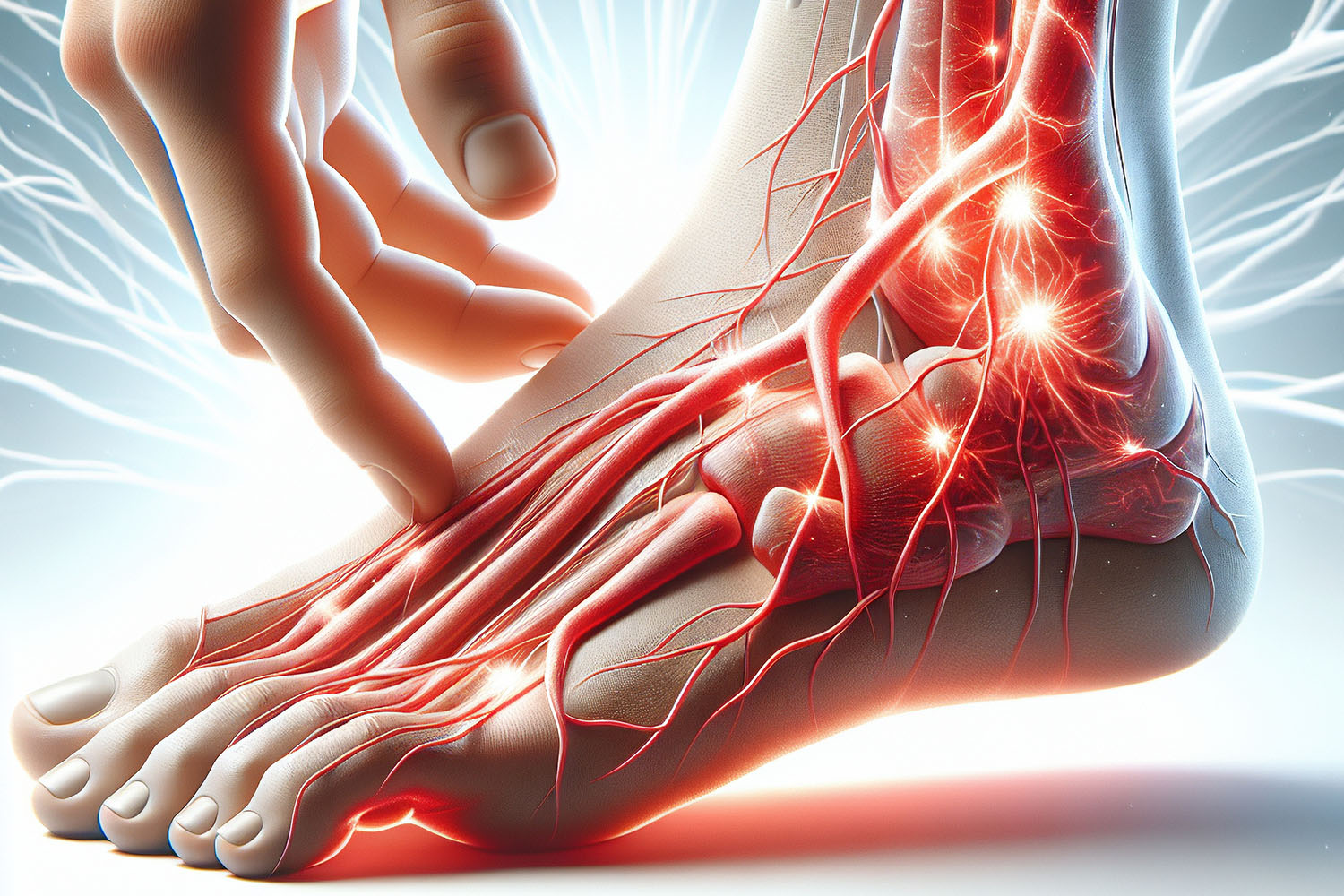Overview
The human foot is a marvel of engineering, a complex structure that provides support, balance, and mobility. Whether you’re walking, running, or simply standing, the various parts of the foot work in harmony to facilitate these activities. Let’s delve into the anatomy of the foot, exploring its major components and their functions.
Major Parts of the Foot
Bones
- The foot contains 26 bones, accounting for nearly a quarter of the bones in the human body. These bones are categorized into three main groups:
- Tarsal Bones: There are seven tarsal bones in the hindfoot and midfoot, including the calcaneus (heel bone), talus (which articulates with the tibia and fibula to form the ankle joint), navicular, cuboid, and three cuneiform bones. These bones form the arch of the foot and provide stability.
- Metatarsal Bones: Five metatarsal bones extend from the tarsals to the toes. These long bones are crucial for movement and balance. They form the arches of the foot, which absorb shock and distribute weight.
- Phalanges: The toes contain 14 phalanges. Each toe has three phalanges (proximal, middle, and distal), except for the big toe, which has two. The phalanges are essential for maintaining balance and enabling the foot to push off the ground during walking and running.
Joints
The foot comprises numerous joints that allow for its wide range of motion. Key joints include:
- Ankle Joint: Formed by the tibia, fibula, and talus, the ankle joint enables up-and-down movement of the foot.
- Subtalar Joint: Located between the talus and calcaneus, this joint allows for side-to-side motion, essential for walking on uneven surfaces.
- Metatarsophalangeal Joints: These joints connect the metatarsal bones to the proximal phalanges of the toes, playing a critical role in the foot’s flexibility and movement.
Muscles and Tendons
Muscles and tendons in the foot are categorized into two groups:
- Intrinsic Muscles: Located within the foot, these muscles help with fine motor movements and maintain the arch of the foot. Key intrinsic muscles include the interossei, lumbricals, and the flexor digitorum brevis.
- Extrinsic Muscles: Originating from the lower leg, these muscles control the major movements of the foot. Important extrinsic muscles include the gastrocnemius (calf muscle), tibialis anterior, and the peroneal muscles. Tendons like the Achilles tendon and the posterior tibial tendon are also vital for movement and stability.
Ligaments
Ligaments in the foot connect bones to each other, providing stability and support. The plantar fascia, a thick band of connective tissue, runs along the bottom of the foot and supports the arch. Other significant ligaments include the deltoid ligament on the medial side of the ankle and the lateral ligaments on the outer side of the ankle.
Arches
The foot has three primary arches:
- Medial Longitudinal Arch: The highest arch, running along the inside of the foot.
- Lateral Longitudinal Arch: Runs along the outer edge of the foot.
- Transverse Arch: Runs across the midfoot from side to side.
These arches act as shock absorbers and help distribute body weight evenly across the foot.
Functions of the Parts of the Foot
Understanding the functions of the parts of the foot highlights their importance:
- Support: The foot supports the body’s weight when standing and during movement.
- Balance: The structure and alignment of the foot help maintain balance.
- Movement: The joints and muscles facilitate walking, running, jumping, and other movements.
- Shock Absorption: The arches and soft tissues absorb impact, protecting the legs and spine.
Common Foot Problems
Given its complexity, the foot is susceptible to various problems:
- Plantar Fasciitis: Inflammation of the plantar fascia causing heel pain.
- Bunions: Bony bumps that form on the joint at the base of the big toe.
- Sprains and Fractures: Injuries to the ligaments or bones of the foot.
- Flat Feet: A condition where the arches collapse, leading to pain and instability.
The parts of the foot work together in a finely tuned system to provide support, balance, and movement. Understanding the anatomy and functions of the foot is essential for appreciating its role in daily activities and recognizing the importance of foot health. Whether you’re an athlete, a dancer, or someone who enjoys a casual stroll, the intricate design of the foot is vital to your mobility and overall well-being. Take care of your feet, and they will continue to support you every step of the way.



